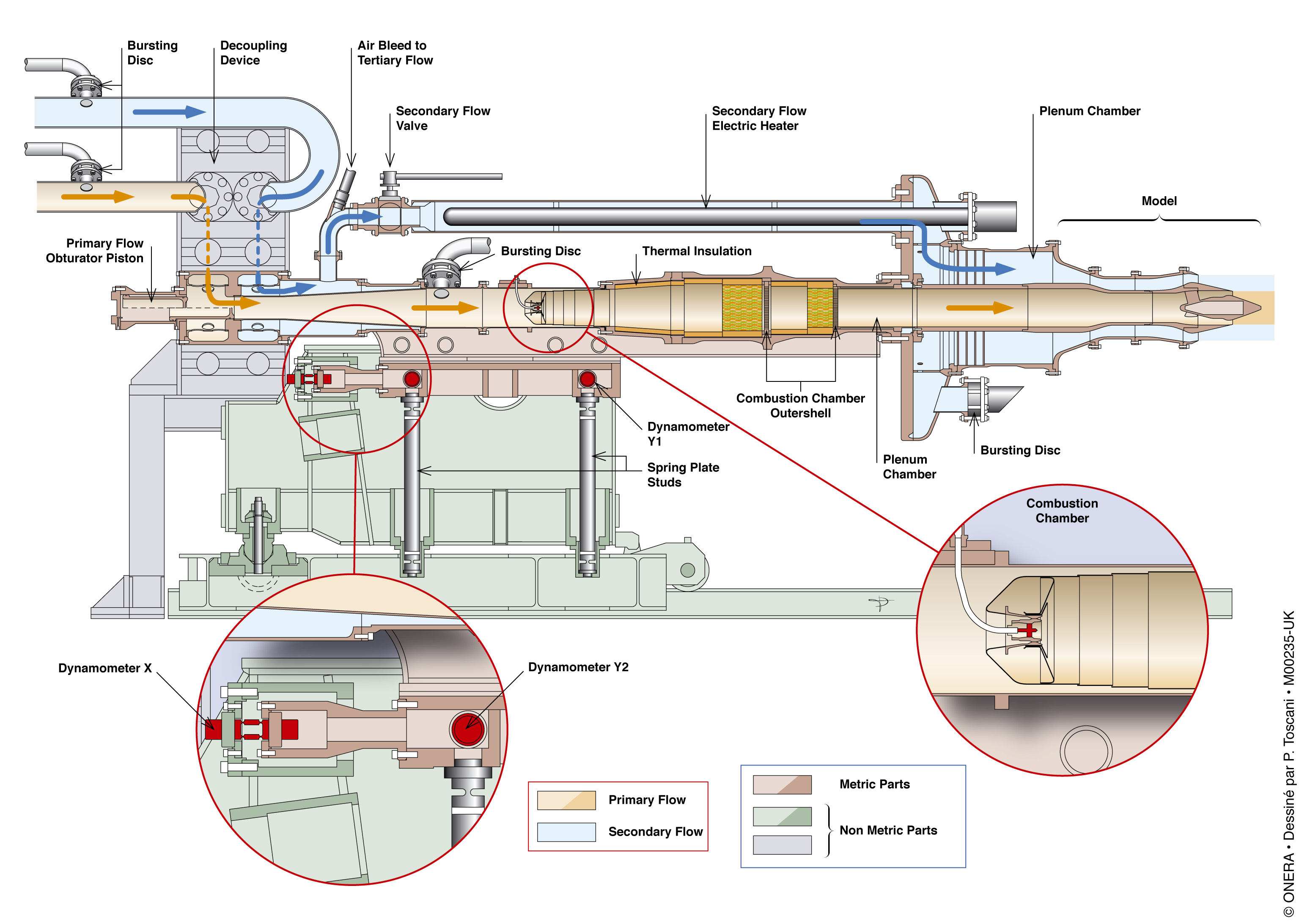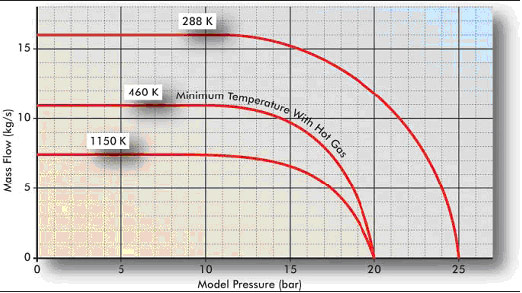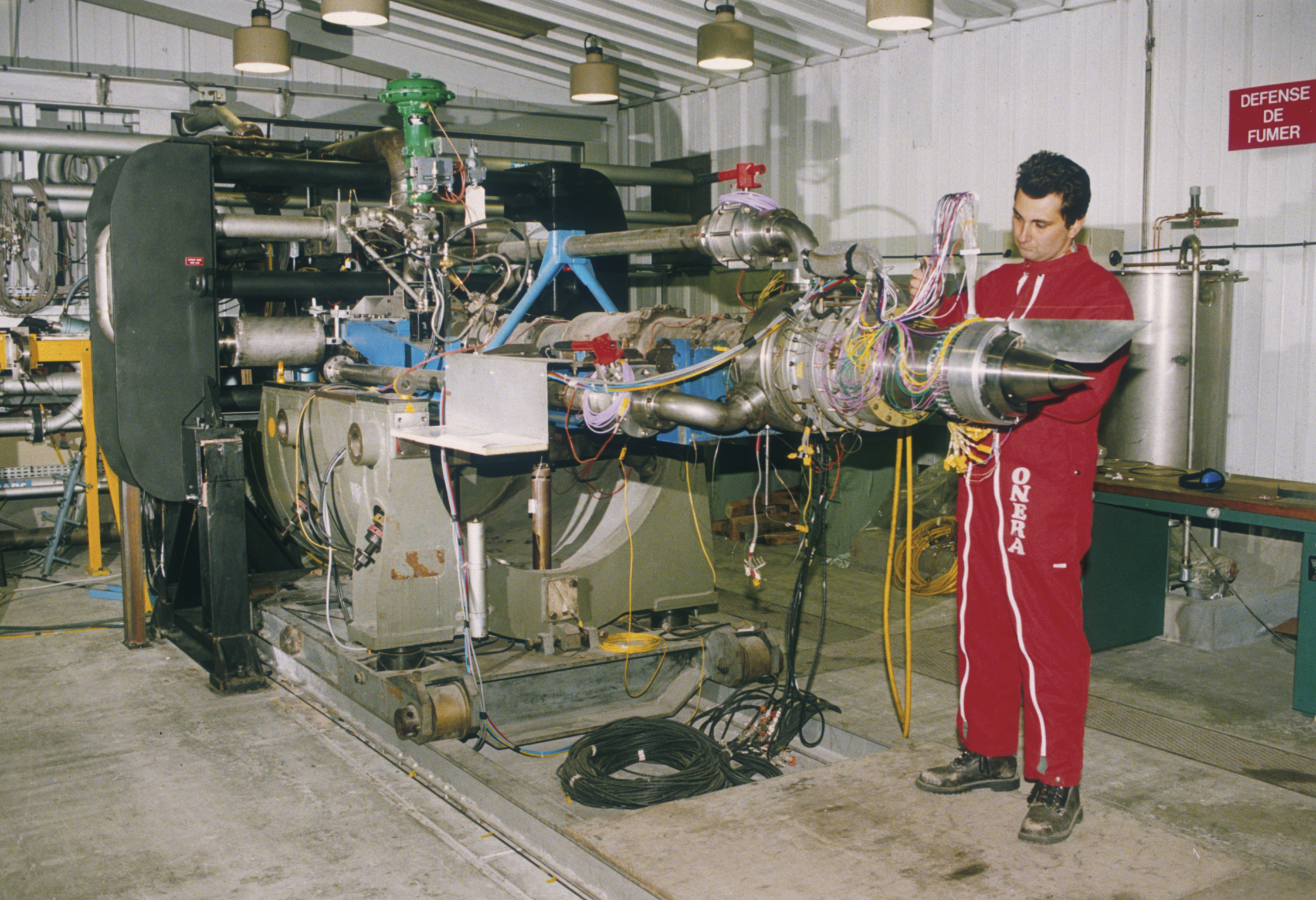Testing Capabilities
- ONERA
- Wind Tunnels
- Testing Capabilities
- BD2 : Nozzle thrust measurement
BD2 : Nozzle thrust measurement
Direct-jet and reverse-jet engine nozzle and afterbody performance characteristics.
Thrust measurement, mass low rate, pressure and distributions on single-flow and bypass-flow models of various scales
Typpical tests
- Nozzles or engine after bodies performance (mass flow, thrust).
- Flow mixers (pressure and temperature maps at different distances downstream the nozzle exit).
- Thrust reversers jet angularities.
Test techniques
- This is a blow down test stand with usable air storage of 3,500 kg, the blow down time depends on the maximum mass flow rate through the model.
- Depending on the flow rates, 6 to 8 blow downs can be run per day.
- The primary and secondary expansion ratios are controlled independently.
- Outlet jet probing capability (pressure and temperature maps at different distances downstream the nozzle exit).
- Outlet jet visualization capability by carbon gas injection in the internal flow.
- Flow angularities can be measured either by probing or by laser velocimetry.
- Infrared signature.
Characteristics
- Forces range:
- dynamometer thrust capacity: 9,000 N ;
- lateral component of the thrust capacity: 1,200 N.
- Flows range:
- primary flow range, 16 kg/s maximum mass flow rate in cold condition, maximal temperature 1,150 K allowed by the stand structure (see the mass flow vs pressure diagram) ;
- secondary flow range, 16 kg/s maximum mass flow rate in cold condition, and 1.5 kg/s maximum at 450 K.
Measurements
- Steady measurements = 96 analog channels, 16 bits A/D converter, digital lowpass filtering with a bandwidth from 0.01 to 10 Hz. Steady accuracy ±1 mV, resolution 0.3mV.
- Unsteady measurements = 64 analog channels at 100 kHz per channel. 12 bits A/D converter, digital lowpass filtering with a bandwidth from 0 to 20 kHz (if necessary the number of channels can be increased).
- Steady pressures = 992 channels (by DTC PSI®, system 8400).
- Primary flow measurement: hot or cold mass flow rate by sonic throat mass flow meters, when hot flow, kerosene mass flow is measured by piston mass flow meter.
- Secondary flow measurement: hot or cold mass flow rate by sonic throat mass flow meters upstream of the heater.
- Laser velocimetry, IR signature and visualizations on request.
Accuracy:
- thrust: ≤± 0.15 % of the calibration range,
- lateral thrust component: <± 4 %,
- mass flow: ≤± 0.1 %.




